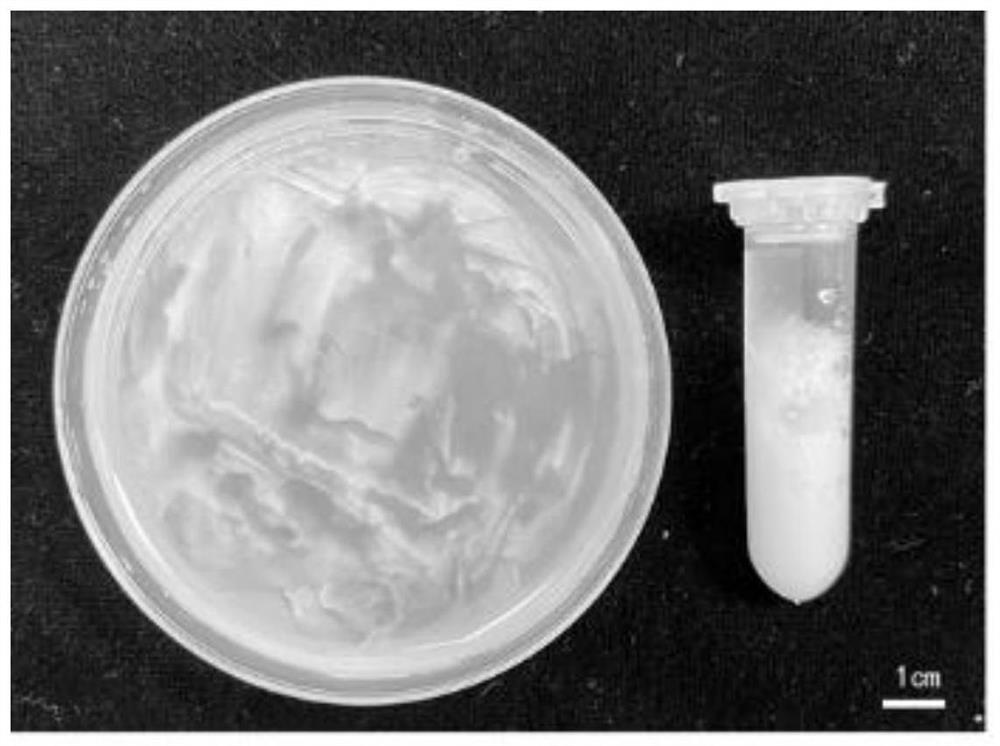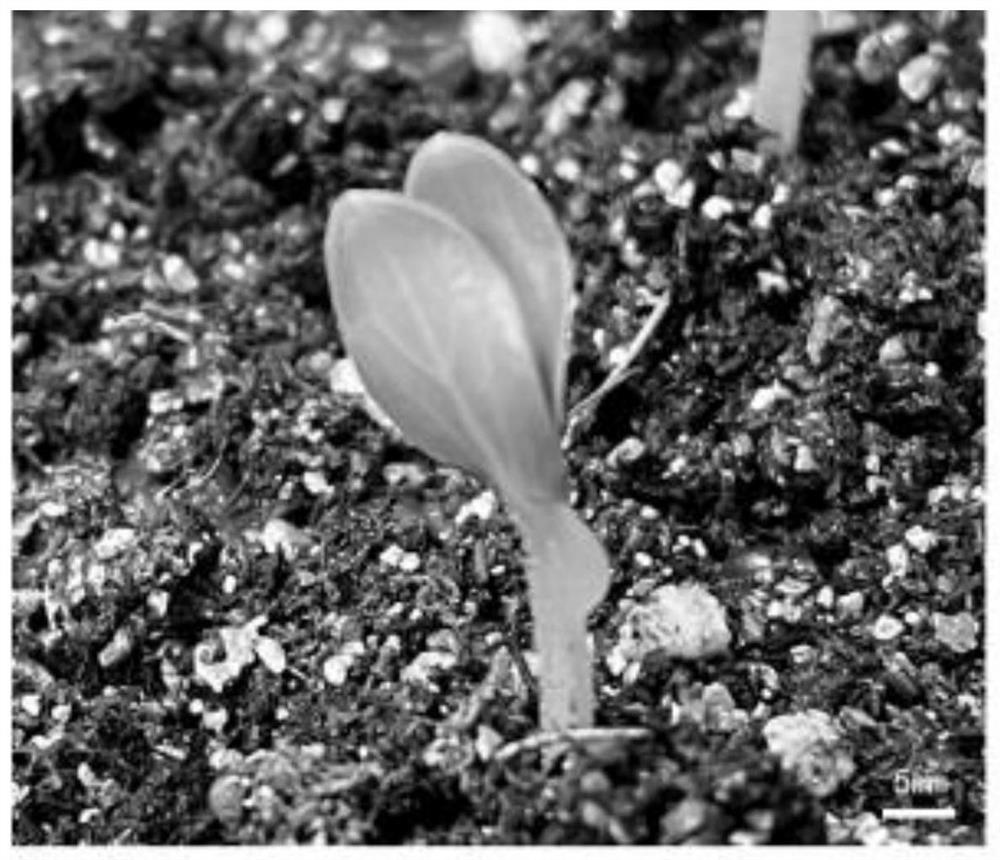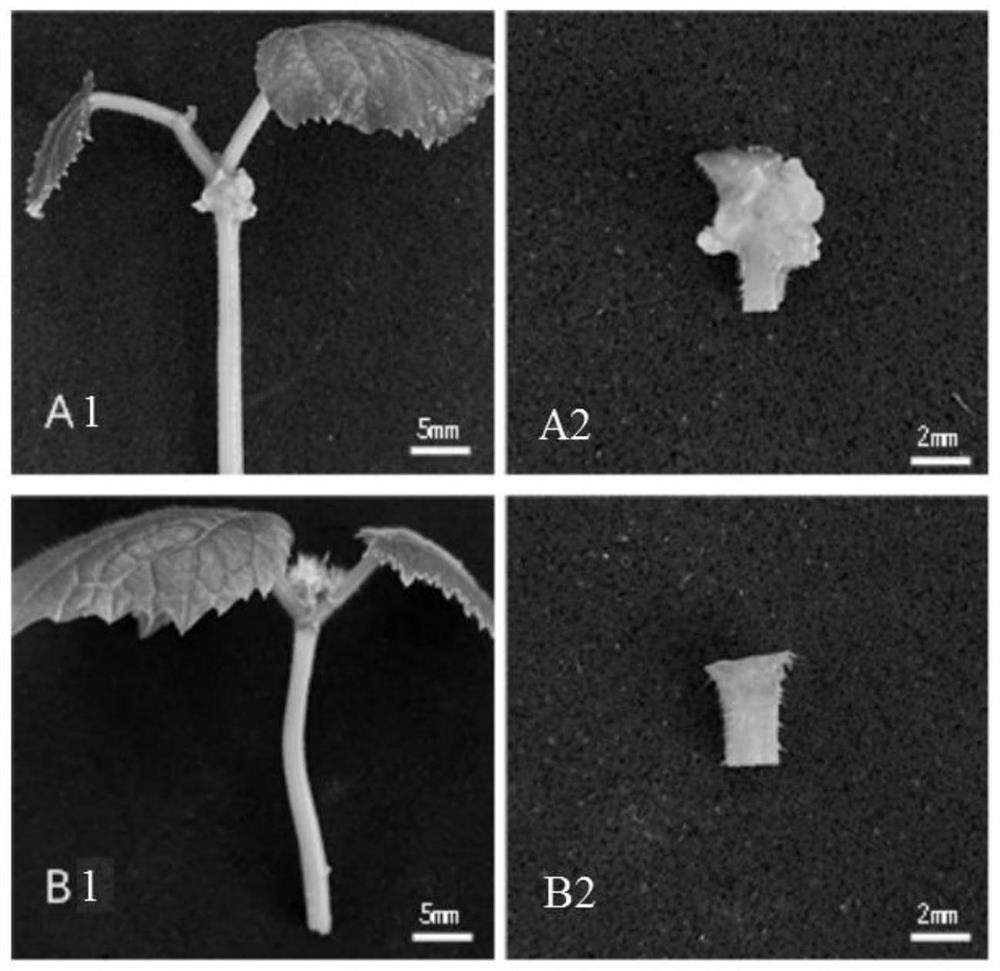Construction method and application of transgenic plant with interaction of cucumber root system and meloidogyne incognita
A technology of root-knot nematode incognita and construction method, which is applied in the field of construction of transgenic plants, can solve problems such as deviation of phenotype and root system response, changes affecting root system, etc.
- Summary
- Abstract
- Description
- Claims
- Application Information
AI Technical Summary
Problems solved by technology
Method used
Image
Examples
preparation example Construction
[0035] In the present invention, the preparation method of the bacterial liquid preferably includes the following steps:
[0036] Inoculate the Agrobacterium rhizogenes transformed with the target gene carrier to be tested or knock out the target gene carrier in the resistant medium, and culture until monoclonal plaques grow, and collect the monoclonal plaques with sterile water to obtain Monoclonal plaque resuspension: mixing the monoclonal plaque resuspension with acetosyringone and incubating to obtain a bacterial solution.
[0037] In the present invention, the culture time is preferably 48-72 hours.
[0038] In the present invention, the resistant culture medium is water-based, preferably comprising components of the following concentrations: peptone 5-10g / L, yeast extract 3-5g / L, calcium chloride aqueous solution 10ml / L, agar 10~15g / L, streptomycin 50~80mg / L and kanamycin sulfate 50~80mg / L; the pH value of the resistant medium is 7.0~7.2; the calcium chloride in the cal...
Embodiment 1
[0051] Example 1 Transgenic root system of GUS gene cucumber
[0052] (1) Transformation of the target gene vector: the PBI121 expression vector carrying the GUS gene was transformed into Agrobacterium rhizogenes K599 competent cells by chemical transformation method, and after incubation at 28°C for 2 hours at a constant temperature shaker, the plates were plated with kanamycin sulfate and streptavidin Take the positive single clone in 5ml TY liquid medium + 50mg / L streptomycin + 50mg / L kanamycin sulfate at 28°C, 180rpm for overnight shaking, then keep the bacteria for preservation and transform the target gene carrier bacteria liquid.
[0053] TY liquid medium: 5g tryptone, 3g yeast extract, add water to 1L volume, after complete dissolution, sterilize at 121°C for 20min. Prepare 1M calcium chloride aqueous solution and sterilize at 121°C for 20 minutes. Add 10ml of sterile 1M calcium chloride aqueous solution to every 1L of sterilized TY liquid nutrient solution.
[0054...
Embodiment 2
[0061] Example 2 Obtaining transgenic roots of cucumber malate synthase gene CsMS induced by nematode infection
[0062] (1) Construction and transformation of the gene CRISPR knockout vector: two targets were obtained by analyzing and predicting the gene sequence of the CsMS gene, and the two targets were added to the CRISPR expression vector by four-primer amplification and restriction enzyme ligation Used to knock out the cucumber CsMS gene. Transform the expression vector into competent cells of Agrobacterium rhizogenes K599 by chemical transformation method, incubate at 28°C for 2 hours in a constant temperature shaker, plate kanamycin sulfate and streptomycin-resistant TY solid plates, and take positive single clones in 5ml TY +50mg / L Streptomycin+50mg / L Kanamycin Sulfate liquid culture medium was shaken overnight at 28°C and 180rpm, and then the bacterial solution transformed with the target gene carrier was preserved for bacterial preservation.
[0063] (2) Preparatio...
PUM
 Login to View More
Login to View More Abstract
Description
Claims
Application Information
 Login to View More
Login to View More - R&D
- Intellectual Property
- Life Sciences
- Materials
- Tech Scout
- Unparalleled Data Quality
- Higher Quality Content
- 60% Fewer Hallucinations
Browse by: Latest US Patents, China's latest patents, Technical Efficacy Thesaurus, Application Domain, Technology Topic, Popular Technical Reports.
© 2025 PatSnap. All rights reserved.Legal|Privacy policy|Modern Slavery Act Transparency Statement|Sitemap|About US| Contact US: help@patsnap.com



